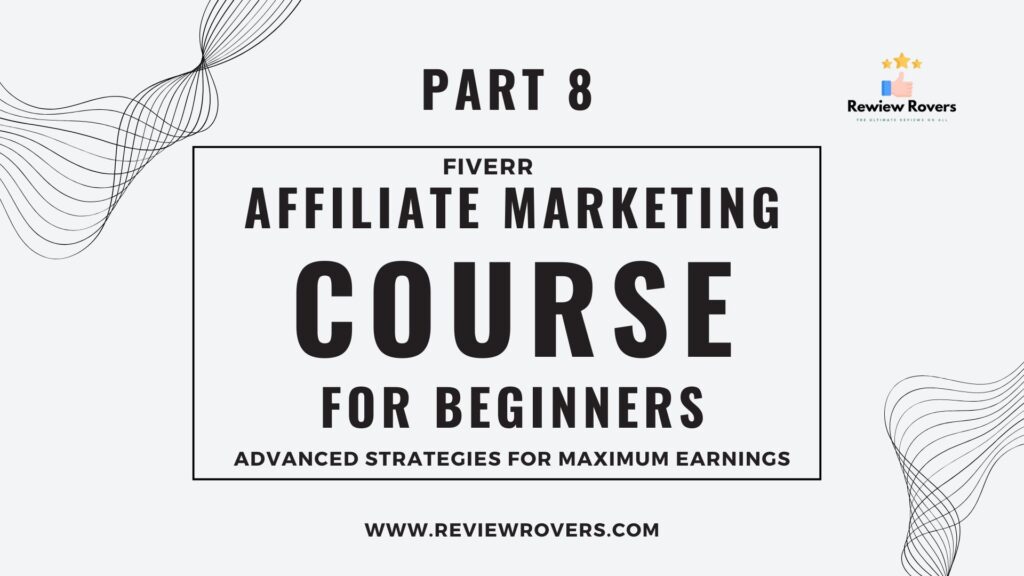
You have learned the basics and now have a great foundation in affiliate marketing. This is the point where you move forward to the advanced level. In this part, we will discuss how you can elevate your earnings and affiliate business by talking about advanced strategies. These involve paid advertising, making lead magnets, or automation of your workflow. These can really help you succeed.
Table of Contents
Paid Advertising For Affiliate Campaigns
Paid advertising is one of the fastest ways to drive traffic to your affiliate links, but it requires careful planning and execution to avoid overspending.
What is Paid Advertising?
Paid advertising means using platforms like Google Ads, Facebook Ads, or YouTube Ads to promote your affiliate content or directly drive traffic to your links.
Why Use Paid Advertising?
- Faster Results: Unlike SEO, paid ads can start generating traffic almost immediately.
- Targeted Audience: Platforms let you focus on specific demographics, interests, or behaviors.
- Scalability: Once you find a campaign that works, you can scale it to reach more people.
How to Get Started with Paid Advertising
- Set a Budget
- Decide how much you’re willing to spend daily or monthly. Start small and scale as you see results.
- Choose the Right Platform
- Google Ads: Ideal for targeting users actively searching for specific services or products.
- Facebook and Instagram Ads: Great for visually appealing promotions and reaching a broader audience.
- YouTube Ads: Perfect for video-based campaigns targeting specific niches.
- Create a High-Converting Ad
- Use attention-grabbing headlines.
- Include clear, benefit-driven calls-to-action (e.g., “Start Your Fiverr Journey Today!”).
- Use compelling visuals or videos.
- Track Your Campaigns
- Use tools like Google Analytics or Facebook Ads Manager to monitor performance.
- Focus on metrics like CTR, conversion rates, and ROI (return on investment).
Pro Tip
Always test multiple ad variations (A/B testing) to find what resonates best with your audience.
Creating Lead Magnets to Build an Audience
A lead magnet is a free resource you offer to potential customers in exchange for their email addresses. It’s a powerful way to grow your email list and build a loyal audience.
What is a Lead Magnet?
A lead magnet could be anything valuable, such as:
- E-books
- Cheat sheets
- Tutorials
- Free templates
- Exclusive tips or guides
Why Use Lead Magnets?
- Build Trust: Offering free value shows your audience you’re knowledgeable and helpful.
- Grow Your Email List: A bigger list means more potential customers for your affiliate promotions.
- Engage Your Audience: Use email marketing to keep your audience updated on new offers or helpful content.
How to Create an Effective Lead Magnet
- Understand Your Audience
- What problems are they trying to solve?
- What resources would make their life easier?
- Create a High-Quality Resource
- If your niche is Fiverr services, you could create an e-book titled “Top 10 Fiverr Gigs to Start Earning Today.”
- Keep it simple, actionable, and valuable.
- Promote Your Lead Magnet
- Add sign-up forms to your website or blog.
- Use social media posts and ads to spread the word.
- Include CTAs in your content like, “Download this free guide to get started!”
Pro Tip
Use email marketing tools like Mailchimp, ConvertKit, or ActiveCampaign to manage your subscriber list and automate follow-ups.
Affiliate Marketing Automation Tools and Techniques
Automation saves you time and effort by handling repetitive tasks, allowing you to focus on creating content and scaling your efforts.
What is Automation in Affiliate Marketing?
Automation uses tools or software to perform tasks like sending emails, posting on social media, or tracking performance.
Why Use Automation?
- Saves Time: Focus on strategy while tools handle the grunt work.
- Consistency: Ensure regular posting, email delivery, and updates without manual effort.
- Better Insights: Many automation tools provide analytics to improve your campaigns.
Top Automation Tools and How to Use Them
- Email Marketing Automation
- Use tools like Mailchimp or ConvertKit to:
- Send welcome emails to new subscribers.
- Schedule newsletters promoting your affiliate offers.
- Create drip campaigns to nurture leads over time.
- Use tools like Mailchimp or ConvertKit to:
- Social Media Scheduling
- Tools like Buffer or Hootsuite let you:
- Schedule posts across multiple platforms in advance.
- Share blog posts, videos, or promotions consistently.
- Tools like Buffer or Hootsuite let you:
- Content Management and SEO Tools
- Use WordPress plugins like Yoast SEO or RankMath to:
- Optimize your blog posts for keywords.
- Analyze readability and SEO scores.
- Use WordPress plugins like Yoast SEO or RankMath to:
- Performance Tracking Tools
- Use platforms like Google Analytics or ClickMeter to:
- Monitor traffic sources.
- Analyze CTR and conversion rates.
- Use platforms like Google Analytics or ClickMeter to:
- Paid Ad Management
- Platforms like Google Ads Manager or Facebook Ads Manager allow you to:
- Automate campaign adjustments based on performance.
- Set bid limits and budgets to prevent overspending.
- Platforms like Google Ads Manager or Facebook Ads Manager allow you to:
Pro Tip
While automation is helpful, always review your results manually to ensure accuracy and make personalized adjustments.
Key Takeaways
- Paid Advertising: Invest in ads for faster results but track performance carefully to ensure profitability.
- Lead Magnets: Offer valuable resources to grow your email list and build a loyal audience.
- Automation Tools: Save time with email marketing, social media scheduling, and performance tracking tools.
By implementing these advanced strategies, you’ll not only increase your earnings but also create a sustainable affiliate marketing system that works for you 24/7. Keep learning, experimenting, and optimizing to stay ahead in the game!
